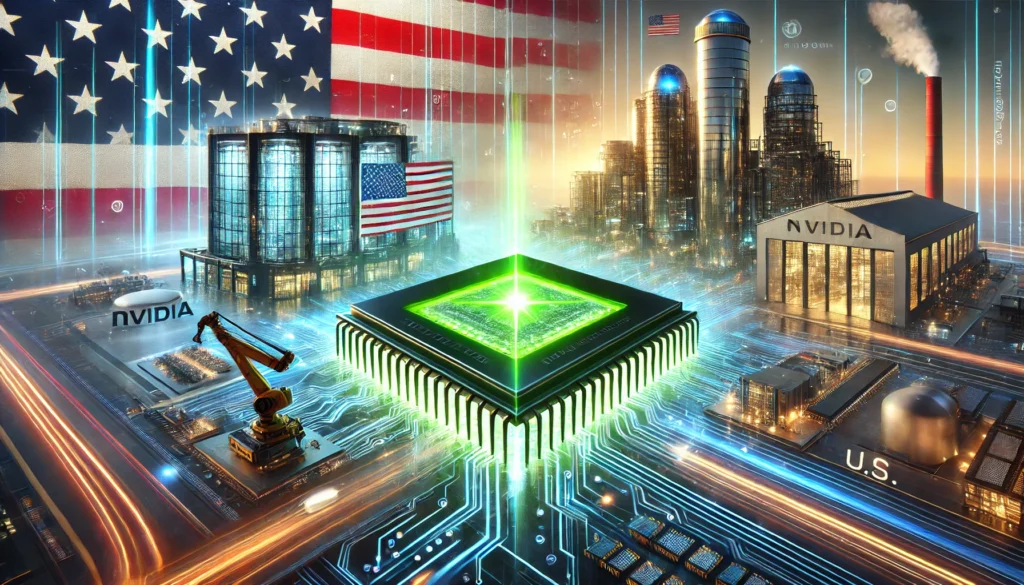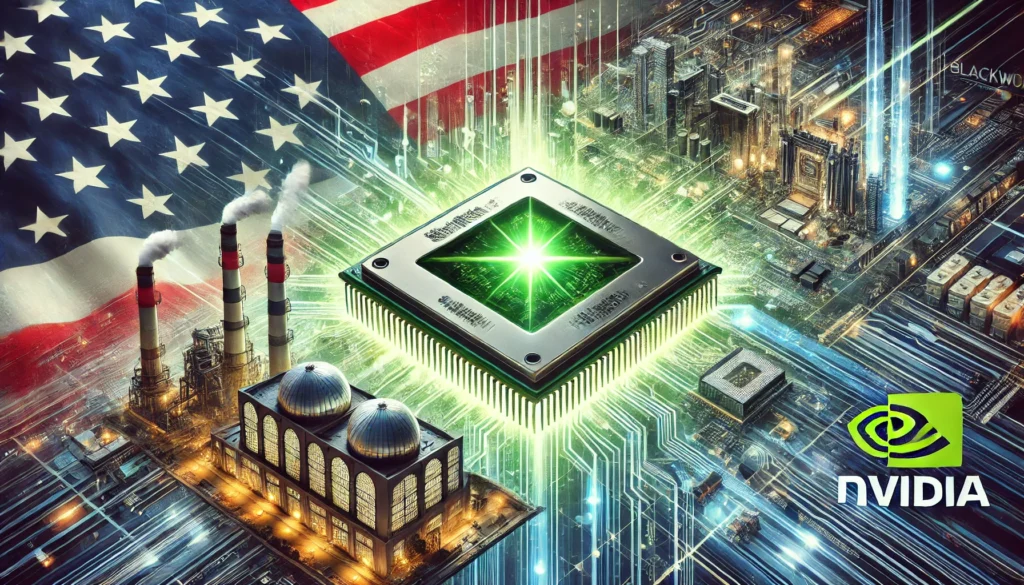Published: April 14, 2025 ✍️ By: Global Innovation & Trade Desk 🌐 Source: GlobalWorldCitizen.com
 Nvidia Announces U.S.-Based AI Supercomputer Production Amid Escalating Global Tech Tensions
Nvidia Announces U.S.-Based AI Supercomputer Production Amid Escalating Global Tech Tensions
In a bold strategic pivot toward tech sovereignty, Nvidia has announced plans to manufacture its AI supercomputers entirely in the United States. The decision comes as U.S.-China trade tensions escalate and global chip supply chains face new threats under tightening tariffs.
This move is part of a growing trend of reshoring advanced manufacturing to the U.S.—aimed at reducing dependence on East Asian semiconductor production and boosting national economic security in the age of generative AI and accelerated computing.
 Nvidia AI Supercomputer Factories Coming to Texas
Nvidia AI Supercomputer Factories Coming to Texas
Nvidia will partner with Taiwanese electronics giants Foxconn and Wistron to establish two major AI manufacturing facilities in Houston and Dallas, Texas. The goal: to fully produce Nvidia’s AI supercomputing systems on U.S. soil.
Production Ramp-Up: Expected within 12 to 15 months
Job Creation: Estimated to generate hundreds of thousands of U.S. jobs
Economic Impact: Trillions in long-term economic security and infrastructure value
“We expect this investment to create hundreds of thousands of jobs and drive trillions in economic security over the coming decades.”
— Nvidia official press release
 Inside Nvidia’s AI Supercomputers: Powered by Blackwell Architecture
Inside Nvidia’s AI Supercomputers: Powered by Blackwell Architecture
At the heart of Nvidia’s new systems is the Blackwell chip architecture, specifically engineered for:
Large Language Models (LLMs)
Generative AI training and inference
Real-time data analytics at hyperscale
According to Hewlett Packard Enterprise, AI supercomputers use ultrafast GPUs and massive parallel processing to handle petabytes of data—a cornerstone of the digital future.
 Tariffs, Trade Policy, and National Tech Strategy
Tariffs, Trade Policy, and National Tech Strategy
Nvidia’s domestic shift aligns with the Trump administration’s economic nationalism and its recent “Liberation Day” tariffs, which aim to curb reliance on foreign electronics supply chains.
While semiconductors were initially exempted, U.S. Commerce Secretary Howard Lutnick confirmed those exemptions are temporary.
“We are taking a look at semiconductors and the WHOLE ELECTRONICS SUPPLY CHAIN.”
— President Trump, on Truth Social
This underscores growing U.S. urgency to control critical technologies and insulate national innovation from global trade instability.
 Market Reaction: Short-Term Uncertainty, Long-Term Impact
Market Reaction: Short-Term Uncertainty, Long-Term Impact
While Nvidia’s announcement was hailed as visionary, investors showed mixed reactions:
Nvidia stock (NVDA) dipped slightly to $110.83
Broader markets rose—highlighting cautious optimism amid tariff fears
Concerns include rising production costs and global chip supply disruptions
 Global Semiconductor Power Shifts
Global Semiconductor Power Shifts
Although the U.S. leads in chip design (holding ~50% global market share), manufacturing still relies heavily on Asia—especially Taiwan (TSMC) and Japan.

By investing in end-to-end AI production at home, the U.S. is signaling a long-term shift toward sovereign tech infrastructure.
 GlobalWorldCitizen.com Insight: The New Geopolitics of Innovation
GlobalWorldCitizen.com Insight: The New Geopolitics of Innovation
This announcement is more than a supply chain update—it marks a strategic shift in the global AI arms race. As tech, trade, and national security collide, countries are racing to build resilient, localized innovation ecosystems.
Key Insights:
AI is now a matter of economic security
Tech independence is the new soft power
Supply chains are being redrawn across political borders
The world is no longer just competing on what it builds—
but on where, why, and how fast it can build it.

 Final Word from GlobalWorldCitizen.com
Final Word from GlobalWorldCitizen.com
Nvidia’s move to U.S.-based AI manufacturing is a signal flare for the future of global innovation. In a world divided by trade wars and tech rivalries, sovereign production capabilities are becoming the true currency of power.

AI and semiconductor policy shifts
Global innovation and tech sovereignty trends
The emerging digital cold war shaping our world economy

